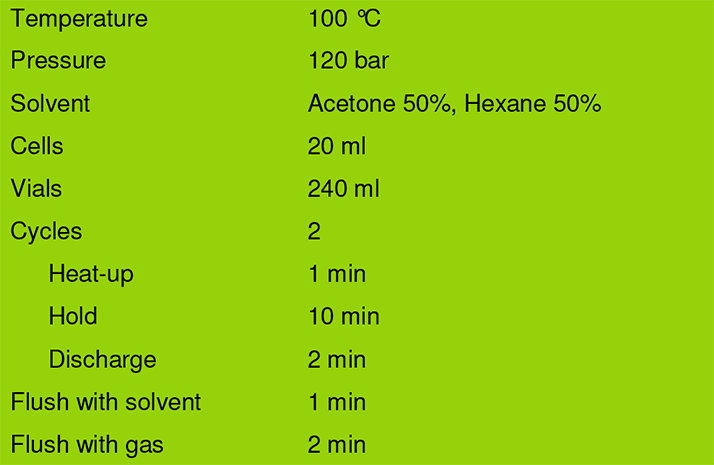Introduction
PCBs were used as coolants and dielectric fluid in transformers, as flame retardants, hydraulic fluids and additives in plastics and for many other applications until the 1980s. They are toxic, persistent and bioaccumulate in terrestial and aquatic biosystems and due to atmospheric effects they are ubiquitous in the environment. Sediment samples from a round robin program (SETOC 2008/4, Wepal, Wageningen University) were extracted according to EPA 3545A [1] with the Buchi SpeedExtractor E-916 and analyzed by GC-MS. The results correspond to the values found by the round robin testing and show high recovery and low variation.

Poychlorinated Biphenyles (PCB) are a class of organig compounds whose biphenyl skeleton is substituted with 1- 10 chlorine atoms. To simplify description they are usually specified with a number from 1 to 209. Until the 1980s PCBs were used as coolants and dielectric fluid in transformers, as flame retardants, hydraulic fluids and additives in plastics and for many other applications. Today, production and use are banned nearly worldwide.
 Figure 1: Formula of Polychlorinated Biphenyles
Figure 1: Formula of Polychlorinated BiphenylesExperimental
Instrumentation: SpeedExtractor E-916 with 20 ml cells, GC-MS Varian 3000 Samples: 3 different samples from the SETOC 2008/4 round robin, Wepal, Wageningen University Approx. 3 g of dry sample was mixed with 10 g of sand and filled into the extraction cell. After addition of the internal standard solution the samples were extracted using the parameters shown in Table 1. A four-fold extraction was performed. The collected extracts were analyzed by GCMS.
 Table 1: Extraction method PCB
Table 1: Extraction method PCB




